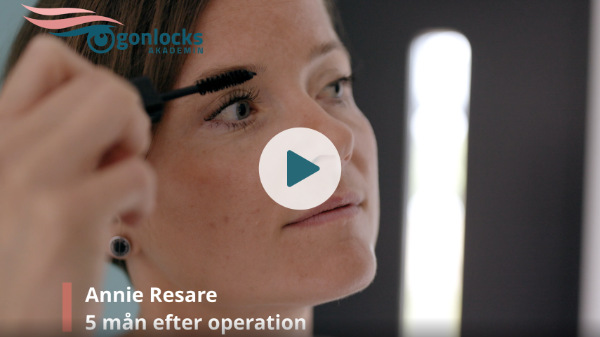
Stye/Chalazion
A stye is an inflammation in the eyelid. The inflammation, which is usually temporary, is located in the fine sebaceous glandular passages in the sebaceous glands of the eye. The stye can be found in different places around the eye. For example, an outer stye can appear along the lash line while an inner stye is deeper inside the eyelid. A stye usually makes no physical harm, but it can be cosmetically disruptive.
A stye appears rapidly in a few days and is red and sore at first. It can also cause irritation and rub against the eye. The stye can vary in size, from barely being visible to becoming a few centimeters large. Usually the size of a stye varies from a small pea up to the size of a marble. A large stye can sometimes push down the eyelid a bit.
A stye usually disappears by itself after a while, without treatment. Most styes disappear naturally, but that can take anywhere from a few weeks to several months.
When the stye is no longer sore and instead has become like a solid bead, it has encapsulated. It is then called a “chalazion”. A chalazion may also disappear on its own, but it can be removed if necessary. The first step when you want a chalazion surgery/chalazion removal is to visit Ögonlocksakademin for a free consultation.
Stye / chalazion removal
If your chalazion still remains after a long time, we can help you by removing it surgically. Chalazion surgery is usually performed after long-lasting discomfort (more than 3–6 months) if the lump is considered to be cosmetically or functionally disruptive.
In general, a chalazion does not affect your sight, although it can lead to astigmatism (blurred vision) in the long run. The main reason to remove chalazions through surgery is due to cosmetic reasons.
Free consultation
Do you want to remove your stye or chalazion? Make an appointment for a free consultation at Ögonlocksakademin. We are more than happy to answer all your questions about your stye or chalazion and about the surgery itself. A consultation is completely free from obligations and non-binding.
Surgery chalazion
Chalazion surgery is a relatively simple and quick procedure. As with all our eyelid surgeries, only the eyelid is anesthetized, which means that you are awake during the entire surgery. The anesthesia that we use is almost totally painless and specially developed to be used for local anesthesia.
We usually remove your chalazion/stye from the inside of the eyelid. It is a quick procedure which usually takes about 10 minutes. Afterwards, we put a gel on the area and a pressure bandage is placed on the eye for about 15 minutes, until the bleeding stops.
No stitches are needed after we removed the chalazion, which means that you will not get any scars either.
Surgery chalazion
Chalazion surgery is a relatively simple and quick procedure. As with all our eyelid surgeries, only the eyelid is anesthetized, which means that you are awake during the entire surgery. The anesthesia that we use is almost totally painless and specially developed to be used for local anesthesia.
We usually remove your chalazion/stye from the inside of the eyelid. It is a quick procedure which usually takes about 10 minutes. Afterwards, we put a gel on the area and a pressure bandage is placed on the eye for about 15 minutes, until the bleeding stops.
No stitches are needed after we removed the chalazion, which means that you will not get any scars either.
FREQUENTLY ASKED QUESTIONS ABOUT CHALAZION / STYE
What is the difference between a chalazion and a stye?

A stye is an inflammation on the eyelid. When the stye is no longer sore and red but instead feels like a solid bead, it has encapsulated. It is then called a chalazion.
Why do you get a stye?

A stye is caused by bacteria entering the sebaceous gland of the eye. There are certain factors that can increase the risk of getting a stye. If you struggle with pollen allergy, have acne or if the edges of your eyelids are dry, you are at greater risk of getting a stye. A stye can also be caused by mismanage of hygiene when using lenses.
Is there any gel or medicine for styes?

There are some non-prescription gels that you can use to relieve discomfort if you have a stye rubbing against your eye.
What can I do myself?

If you have a stye on your eyelid, there are also some things you can do yourself to ease the discomfort. Keep the eye and eyelid clean by rinsing it with plain, warm water. A light massage (no squeezing or pressing) can also help to open up the sebaceous gland.
Can I have makeup on my stye/chalazion?

Makeup can make the problems worse and can contribute to inflammations. Try not to touch the stye or around the eye too much. You should also avoid using lenses that can irritate the inflamed area.
How long before a stye/chalazion disappears?

How long it takes for a stye to disappear varies. Usually it will disappear after a few days, but it can take anything from a week to several months.
Listen to some of our patients


